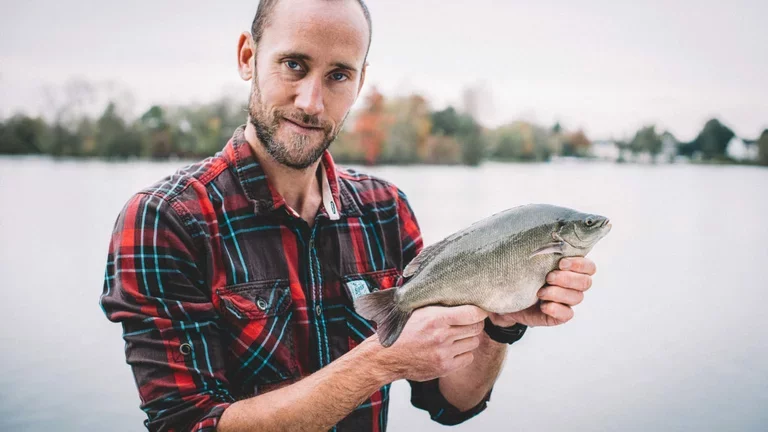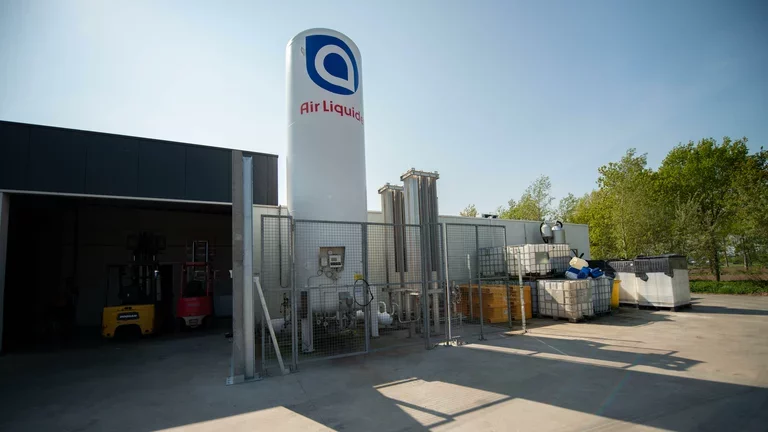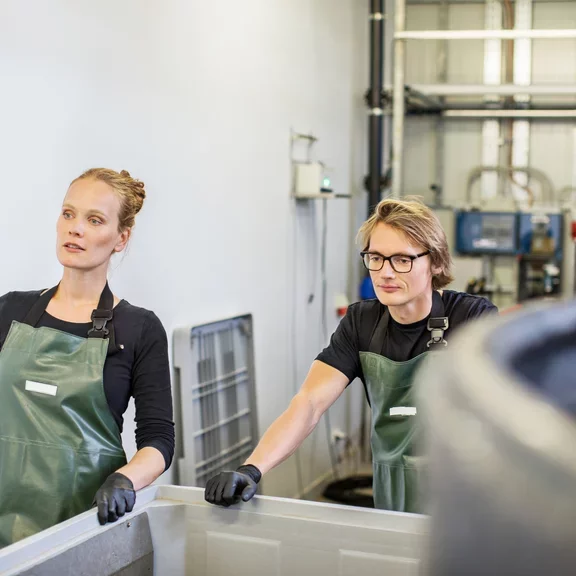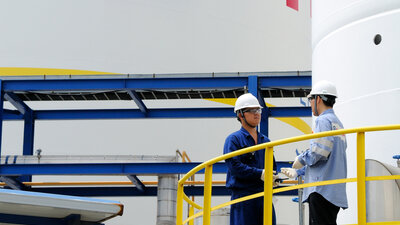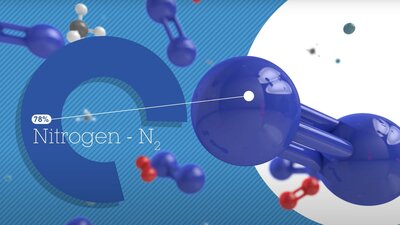Aquaculture: learning to cultivate sustainability in water
Published on October 26, 2022
5 minutes
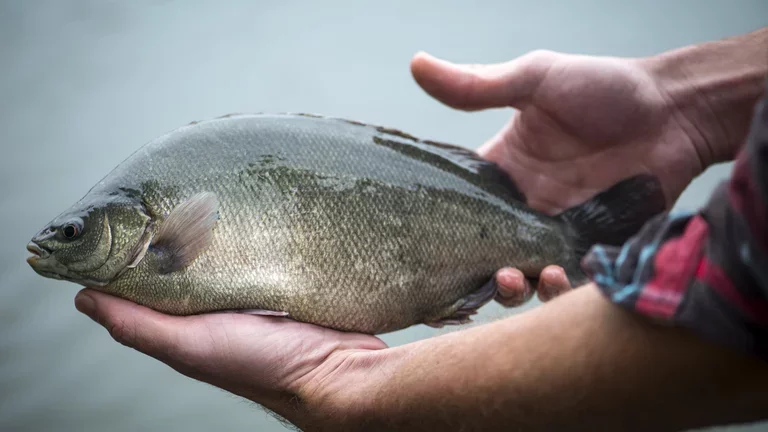
In a world where population and individual consumption continue to grow, aquaculture has sparked interest for the promise it holds for the world food transition. In fact, it’s the third year in a row that aquacultures’ global fish production overtakes that of fishing. So, what is aquaculture? How can it help the food industry become more sustainable? And how can Air Liquide be an active part of this effort?
Aquaculture at a glance
Aquaculture is the farming of aquatic plants and animals in natural or controlled conditions. It can refer alternatively to the farming of fish, seaweed, oysters, clams in brackish water, fresh water, or salt water in manufactured settings (ponds, pools) as well as natural ones (mariculture at sea).
This form of farming presents many advantages. A notable benefit is the feed conversion rate of fish: the weight of feed intake divided by weight gained by the animal. For example, 2.63 kg of feed is used to produce 1 kg of pork, while only 1.3 kg for the same weight of Atlantic salmon. In addition to this, aquatic cultures offer a better allocation of space thanks to three-dimensional stocking offered by water.
Environmentally, modern fish farms don’t impact ecosystems like intensive fishing. By being enclosed systems, they offer a lower risk of contamination with pharmaceuticals or pathogens to waterways. Water demand is also an environmental advantage with super intensive recirculating aquaculture systems (RAS) where only 0.4% of the water is make-up water. Thus, as much as 99.6% of the water needed can be reused on site.
Room for improvement?
However, drawbacks are also significant, aquacultures have longer production cycles (1 to 3 years) and are prone to the fast spread of diseases and anoxia (the lack of oxygen) inside the farm and transferred with water into the environment. This is because aquatic environments have many parameters such as light, pH, flow, and temperature that can make their management very difficult. Based on RAS, Aqua4C is a brilliant example of how the traditional drawbacks of aquaculture can be subverted. This fish farm located in Kruisem, Belgium has rapidly evolved from a research project to a commercial one. Its particularity? It is the world’s most sustainable fish farm. Why? Because it farms one of the world’s most sustainable fish in the most sustainable way.
Tomorrow’s fish is vegetarian and social
The fish in question, Omega Perch (or Omegabaars), is fully vegetarian, feeding mainly on grains and seeds with a feed to food ratio of 1.2 kg. This sole tasting fish owes its appellation to its high omega 3 content. It’s also a warm water fish, which is economically interesting as it grows faster than cold water fish. It’s moreover a social fish, which means you can breed a large number of them without stressing it. Finally, it’s also a freshwater fish, a key factor for the management of the farm’s water.
Indeed, Aqua4C has developed a revolutionary complementary sustainability model, where the fish farm uses no water from the network and demands minimal energy from the grid. How? They have set a collaboration scheme with the tomato farm next door. The tomato farm supplies Aqua4C’s basins with rainwater collected naturally from their greenhouses. In return, Aqua4c supplies them with the residual water, rich in nutrients as a natural fertilizer. Lastly, solid waste from the facility is used for biogas production, closing the energy balance.
Partnering with Air Liquide for efficiency and sustainability
Despite the exemplary running of their operation, in 2019 the farm decided to change a key feature to the survival of their fish: liquid oxygen supply. Charles-Aimé Fransman, Aqua4C’s operations manager explains: "Up to that point, we used an oxygen generator, but the problem is that the reliability of such a generator is not optimal. Every time the generator went down, we had to rely on a back-up system – bundles of oxygen cylinders – and hope that the generator could be repaired before the oxygen from the back-up system ran out. A very stressful business. The system also needed a fair amount of maintenance and was not very flexible: if, for some reason we temporarily wanted a faster flow of oxygen, the generator couldn’t provide it."
After consulting several leading aquaculture specialists, it was decided to switch to a system based on pure oxygen (delivered liquid, injected in gaseous form). That’s when Air Liquide stepped in. "We were looking for a new oxygen cylinder supplier for our back-up system and Air Liquide offered a very competitive total cost of ownership. Air Liquide was immediately able to help us optimize costs and improve efficiency," says Charles-Aimé Fransman.
Another decisive factor was being able to get the oxygen in the most sustainable way possible. Air Liquide’s CO2-neutral production and transport meant the oxygen supplied was greener than that provided by the generator. "Looking at the overall cost picture, the Air Liquide solution turns out to be no more costly than the traditional setup with an oxygen generator, while we can also make full use of the advantages of course. In short, we now have a reliable source for our oxygen, and we can sleep easy again. That wasn’t always the case before," adds Charles-Aimé Fransman.
Scaling up fish and beyond
Aqua4C is currently planning to scale up its production significantly from a new location by 2024. They now want to handle the processing of the fish - notably fileting and packaging - themselves. This will help them maximize quality control right down to the point of sale. "What is certain is that we will once again choose Air Liquide’s oxygen solution," Charles-Aimé Fransman assures.
The Aqua4C example proves that aquaculture systems hold incredible potential. This type of culture offers great production capacity while fighting the impact of overfishing on ecosystems and reducing wastewater discharge. Specialized technology will most likely continue to evolve, and other applications may also emerge. For its part, Air Liquide is a committed partner for the sector and collaborates to support safe and sustainable production to meet world's growing food demand.
